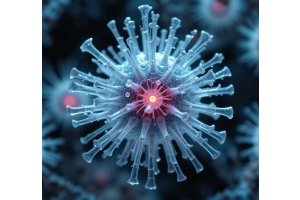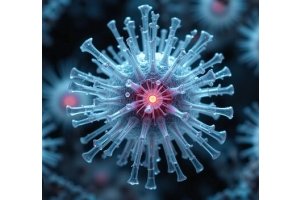Page 2 - Equi-infos
- - May 08, 2025 85
Lucky Speed, étalon PS stationné en Belgique, géré par la BTBA (Belgian Thoroughbreds Breeders Association), gagnant du Derby Allemand Gr.1, déjà père de nombreux gagnants, propose aux éleveurs une génétique rare !
Issu de la souche mâle devenue rare du crack Nijinski, et petit fils du grand Monsun, Lucky Speed est très facile à croiser. De plus il dispose d'un modèle magnifique (1m67) et d'un excellent mental !
Renseignements par mail : contact@eurandlab.com
- - May 06, 2025 62
Guide et protocoles de biosécurité environnementale équine avec Biofresh et Victory
Ce guide fournit un protocole structuré pour l'intégration de Biofresh et Victory dans les environnements équins, garantissant la biosécurité de l'air et des surfaces tout en s'alignant sur les meilleures pratiques du Dr Katie Flynn (US Equestrian Federation Equine Health & Biosecurity) ainsi que sur les directives vétérinaires mondiales.
- - May 06, 2025 30
This guide provides a structured protocol for integrating Biofresh and Victory into equine environments, ensuring Air and Surface Biosecurity while aligning with best practices from Dr. Katie Flynn (USEF Equine Health & Biosecurity) along with global veterinary guidelines.
This protocol applies to stables, veterinary centres, competition grounds, transport vehicles, and confined equine spaces, where maintaining high biosecurity and air quality is critical.
- - March 22, 2025 60
Aspergillus est un contaminant fongique courant dans l'environnement équin, notamment dans le foin, la litière et les écuries.
Il est connu pour provoquer des infections respiratoires telles que la pneumonie fongique équine et l'aspergillose allergique, qui peuvent toutes deux avoir un impact important sur la santé et les performances des chevaux.
BIOFRESH Equin montre une efficacité contre cette menace pour les chevaux de compétitions !
Aspergillus is a common fungal contaminant in equine environments, particularly in hay, bedding, and stable conditions.
It is known to cause respiratory infections such as Equine Fungal Pneumonia and Allergic Aspergillosis, both of which can severely impact equine health and performance.
Equine BIOFRESH has shown an efficacity against this threat for our competitions horses
- - March 21, 2025 53
Le challenge Omeprazole <> Gastric Gold Control !
Plaidoyer pour l'utilisation du Gastric Control Gold (GCG) comme alternative à l’Omeprazole pour la santé intestinale des équidés
L’Oméprazole est devenu la solution de référence pour les ulcères gastriques équins grâce à sa capacité à supprimer rapidement la production d'acide gastrique.
Cependant, l'utilisation à long terme d'inhibiteurs de la pompe à protons (IPP) présente des défis importants, notamment des carences nutritionnelles, un risque accru d'hypersécrétion acide rebond et des coûts élevés.
OVVET Gastric Control Gold (GCG) offre une alternative efficace et naturelle, offrant des bénéfices à long terme pour la santé gastrique sans les inconvénients des IPP.
- - October 30, 2024 160
Cucurbiturils??
In the wide area of supramolecular chemistry, cucurbiturils (CBn) present themselves as a young family of molecular containers, able to form stable complexes with various guests, including drug molecules, amino acids and peptides, saccharides, dyes, hydrocarbons, perfluorinated hydrocarbons, and even high molecular weight guests such as proteins (e.g., human insulin).
Dans le vaste domaine de la chimie supramoléculaire, les cucurbituriles (CBn) se présentent comme une jeune famille de conteneurs moléculaires, capables de former des complexes stables avec divers composés, notamment des molécules médicamenteuses, des acides aminés et des peptides, des saccharides, des colorants, des hydrocarbures, des hydrocarbures perfluorés et même des composés de poids moléculaire élevé tels que des protéines (par exemple, l'insuline humaine).
- - October 18, 2024 72
EOTRH (Résorption dentaire odontoclastique équine et hypercémentose), en anglais : Equine odontoclastic tooth resorption and hypercementosis) . La maladie parodontale équine est une affection courante et douloureuse dont l’étiologie et la pathologie sont mal comprises.
EOTRH (equine odontoclastic tooth resorption and hypercementosis) affects about 5% of the horse population globally. Horses may also have inflamed gums and advanced gum disease.
- - October 09, 2024 48As you will be aware, the rehabilitation of equine tendon and ligament injuries is a complex process that requires a thorough understanding of the mechanical properties of soft tissues, and in particular the principles of fibre alignment and load limiting. These principles are crucial for promoting optimal healing, reducing the risk of re-injury, and restoring function in athletic horses
- - September 18, 2024 50
What is UTC?
Ultrasound Tissue Characterization (UTC) is a technology that uses a combination of both hardware and software to assess the fiber composition of your horse’s tendons and ligaments particularly in the distal limb.
A key part of this system is the UTC-Tracker, a precise tool that moves the ultrasound probe automatically along the length of a tendon, capturing images every 0.2 mm over a 12 cm area. These images are saved and processed in the operating system creating a 3D view of the tissue in the tendon or ligament.
With this 3D fibers model, vets can see the tendon (or other tissues) from different angles including transverse, sagittal, and coronal views, and a 3D rendered view. The user can also scroll through the entire model (like an X-ray). This helps to get a detailed look at the connective tissue the tendon sheath surrounding the tendon, and the inside of the tendon or ligament itself. This detailed view allows for accurate assessments of any damage or disintegration - - November 08, 2023 130
Equine Gastric Ulcer Syndrome is well known amongst equine veterinarians.
By Dr Michael Robinson
Aetiology
EGUS is best regarded as two separate entities: Equine Squamous Gastric Disease (ESGD) and Equine Glandular Gastric Disease (EGGD)1.
The two conditions may occur either independently or concurrently in the same horse. The presence or absence of one cannot be used as a predictor for the presence of absence of the other1.
ESGD is very common (between 11-95% depending on discipline and management)1,2. The causes of ESGD are well documented and it is known to be highly responsive to routine treatment with proton-pump inhibitors, such as omeprazole1.
EGGD is becoming more widely recognised (between 16-65% depending on discipline and management)1,2 as more veterinarians seek out the pyloric region of the stomach on routine gastrocopies. Visualisation of this region may be technically challenging but is an essential part of a full gastroscopy (Figure 1). The specific causes of EGGD are



